The name Ellis Island is familiar to many Americans who have tried to trace the paths of the ancestors during their immigration to the New World. Ellis Island was the primary inspection station from 1892 to 1954. During that period newcomers would be housed at the facility for varying periods of time, often facing a bewildering set of questions and health checks. One can only imagine the tears of joy and sadness as people passed through the halls and offices.
As the years passed and more immigrants began to arrive by plane rather than by ship, Ellis Island became less important. Finally, in 1954 the decision was made to close the facility. The doors were locked, with most of the contents of the buildings left inside, and the island was left sitting quietly in New York Harbor. Instead of anxious immigrants, the only visitors to Ellis Island were politicians, real estate speculators - and vandals.
Once a showplace for new arrivals, Ellis Island spiraled downward into an amazing state of decay. The buildings were already old by then and suffering from the New York weather. If that wasn't bad enough, they were further ravaged by miscreants who smashed windows, tore holes in the walls, ripped plumbing from the walls and seemingly threw everything that wasn't nailed down into piles of decaying refuse throughout the facility.
Finally, in 1976, as part of the nation's bicentennial celebration, Ellis Island was re-opened to visitors on a limited basis. Approximately 50,000 people a year toured the decaying ruins - a small number when you consider that each of the Disney theme parks does more business than that in a single day. Following a $150 million dollar restoration, Ellis Island re-opened once again in 1990, this time with several of the buildings restored to their original grandeur. More than 2 million people a year now follow in the footsteps of the crowds that had passed through these halls so many years ago.
About these photos: They were taken on a tour of Ellis Island in August, 1983. It was a bizarre experience, for as I walked through the buildings there were piles and piles of chairs, tables, typewriters, file cabinets and ledgers seemingly everywhere. I remember thinking that only the government could have walked away from all of this and not even bothered to sell it at a salvage sale or just give it away. Some sections of the island were too dangerous to enter, and a look through the windows of some of those buildings showed plants and moss growing on even larger piles of refuse.
I remember this being a tough place to photograph as it was a gloomy day, there was very little light inside the buildings, and I didn't have a flash unit with me. To make things worse, the original slides taken back in 1983 have suffered badly over the years. I generally only used Kodak film, and have tried to store my slides and negatives properly, but for some reason this roll looks particularly horrible today. The colors have all shifted and the images are very dark. The sample images on this page are the best I could do with Photoshop under the circumstances.
I haven't been able to get back to see the island since it was restored, but I am glad I did manage to see it in the years it sat waiting for its rebirth. I feel lucky to have seen the island in a ruined state, as it was a unique experience indeed. The pictures can't convey how quiet the once bustling facility was, with only the sound of the wind and dripping water filling the buildings where thousands once waited to get started on their new lives.
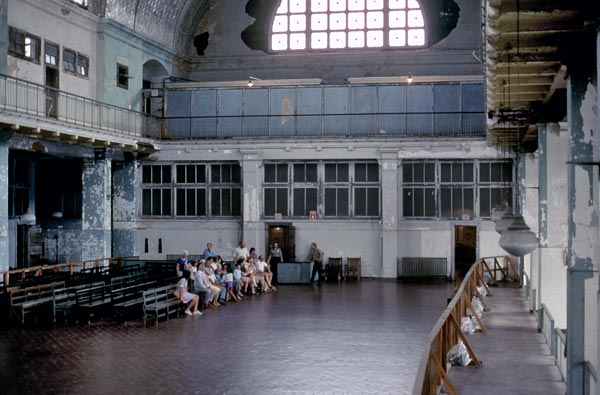
This is the main building's Registry Hall, also known as the Great Hall.
The small size of the tour group shows how little interest there was in touring Ellis Island at that time.
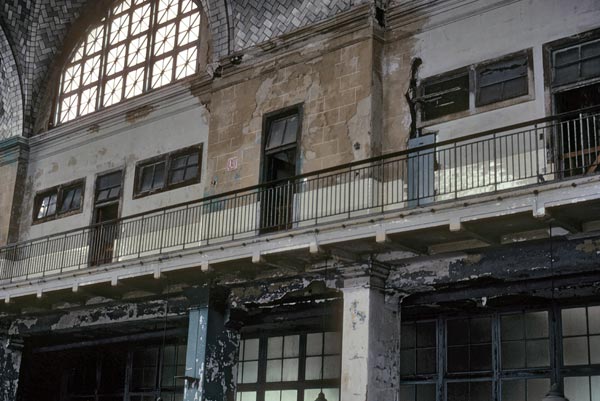
Over the years some of the plaster had fallen away from the walls, revealing the stonework underneath. There had also been some rather messy work down over the years, such as a large electrical box and exposed cable to the right of the stonework.
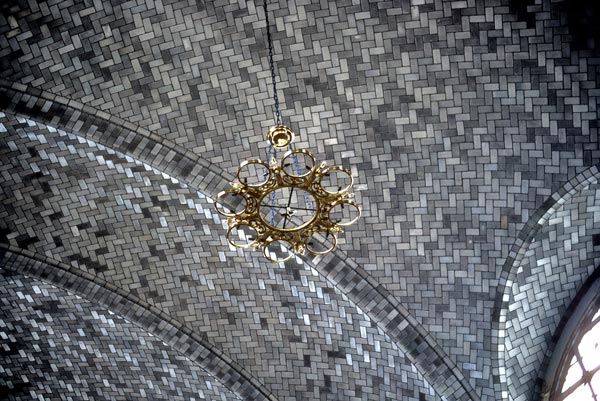
In a tapestry of destruction and ruin, this light fixture in the Registry Hall was a very unexpected sight indeed. One can only surmise that it survived simply because it was inaccessible due to its height.
The intricate tiled ceiling was added in 1917. It was the best preserved feature on the island.
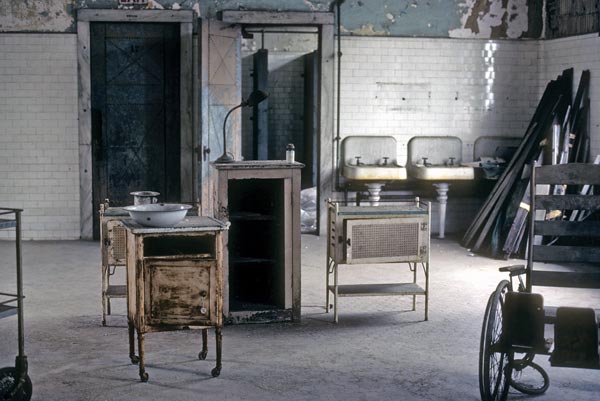
Ancient medical equipment stood rusting in the island's hospital. There were racks of old beds, dozens of enameled basins and, as seen in the corner of the photo, some rather uncomfortable looking wheelchairs.
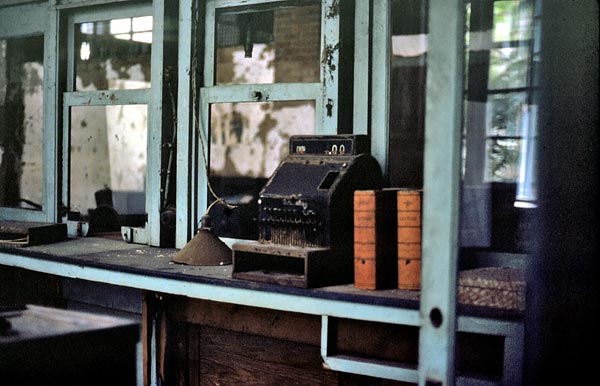
An empty cash register and old ledger books sit on a shelf in the ticket office. This is where those who had passed all of their tests would buy tickets for transportation to the mainland and points elsewhere.
It's hard to see in this size of the picture but there's a key hanging just above the cash register, still there more than 30 years after the place was closed. The whole island was full of little touches like this.
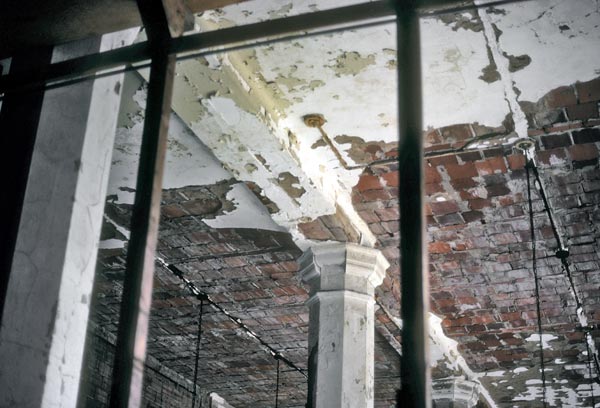
I believe this is a view of the room where luggage was stored as the immigrants were being processed. Most of the plaster ceiling had fallen over the years. While the floor had been cleaned in this area, fallen plaster in other areas had become the bed for numerous plants.
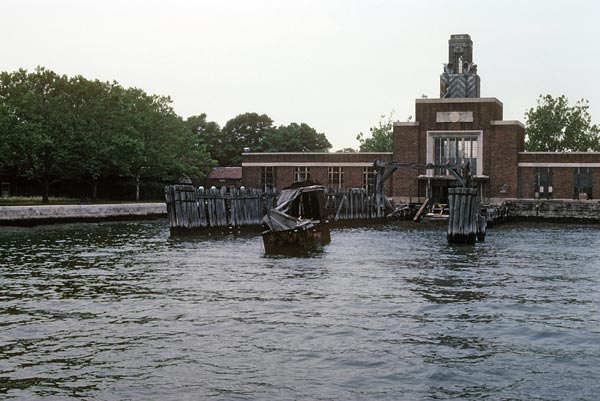
Outside, the final remains of the island's ferry boat lay disintegrating in its slip. What had been a fully operational ship had been allowed to rot away until it finally just sunk where it was docked.